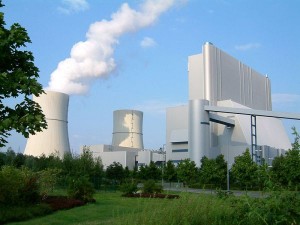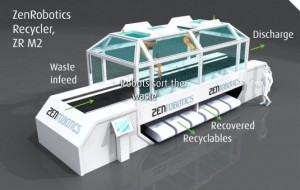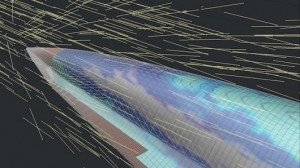Welcome to this week’s 21st Century Technology headlines. Each week we select a few interesting stories about technological advancements that more often help than hurt as humanity tackles the problems we face this century. As always I encourage you to comment and ask questions and welcome your input on the topics I write about or feature. This week we will look at technology affecting climate change, energy, mining, robotics and transportation. Enjoy the read.
Climate Change Update: Carbon Capture Technology that May Actually Work
A California based company, Codexis, announced this week that a pilot project capturing CO2 from flue gas at a power plant in Alabama produced promising results. Using carbonic anhydrase, an enzyme-based carbon capture technology, the company recovered carbon equivalent to 1,800 trees daily. This was a 2-million times improvement over previous demonstrations and showed that enzyme-based carbon capture can trap up to 90% of CO2 emissions. In the United States coal-fired power plants contribute 37% of the CO2 pumped into the atmosphere.

Energy Update: A New Nuclear Reactor that Uses Nuclear Waste as Fuel
GE-Hitachi has proposed to build a next-generation nuclear fission reactor to supply power in the United Kingdom. Called PRISM, the reactor uses plutonium as fuel and liquid-sodium as coolant. Currently the UK stockpiles spent plutonium and depleted uranium fuel rods at nuclear waste facilities throughout the country. It has accumulated enough spent fuel to provide power for half a millennium should the PRISM reactor project move ahead. PRISM can use the spent plutonium and depleted uranium left over from existing reactors to generate 600 Megawatts of continuous clean energy with zero emissions. The designers hope to have PRISM in operation within five years.

Mining Update: China to Mine the Ocean Depths
Hard to know whether to classify this story under mining or inner space but China is about to make a major foray to the ocean floor in search of resources for its expanding economy. The plan is to build a submersible for seabed mining and underwater drilling. The submersible to be built by the China Ship Scientific Research Center will measure 60.2 meters (almost 200 feet), by 15.8 meters (50 feet) and rise 9.7 meters (30 feet) from the ocean floor. It will weigh 2,600 tons and will feature on board accommodation for 33 and multiple ports for docking other submersibles. The plan is to place the station at depths between 1,000 and 8,000 meters (3,300 to almost 5 miles) in depth. A prototype to handle a crew of 12 is to be built and submerged in 2015. The full-scale submersible is planned for 2030.

Robotics Update: Artificial Intelligence Applied to Sorting the Garbage
Containers Maes is a waste logistics operator in Belgium that is about to install its first artificial intelligence based robotic recycling system called the ZenRobotics Recycler, a creation of ZenRobotics Ltd., of Helsinki, Finland. The Recycler uses a wide range of sensors to identify valuable raw materials and remove them from the waste stream for reprocessing.The sensors are tied into the ZenRobotics Brain, a control technology that learns as it is exposed to more materials. The artificial intelligence uses an algorithm that mimics the functions of the human cerebellum allowing for rapid learning about the waste material that gets conveyed through the recycler. To make an even greener statement, Containers Maes is running its robotic system solely on solar power.

Transportation Update: Hypersonic Spaceplane in the Works
Recently we reported that Virgin Galactic has plans to offer sub-orbital commercial rocket flights connecting places like New York and Hong Kong in under an hour. But a new DARPA project under the banner “Integrated Hypersonics” is building a spaceplane that will use a combination of technologies to achieve speeds of Mach 20 (24,000 kilometers or 15,000 miles per hour) while remaining within the atmosphere for time-critical air transport. Called the Hypersonic X-plane or HS, the technology will use air-breathing reusable engines and land on runways. Prior to this project the fastest scramjet achieved Mach 8. For the HX to reach Mach 20 it will use expendable rockets in addition to scramjets. A prototype is planned for launch in 2016.










